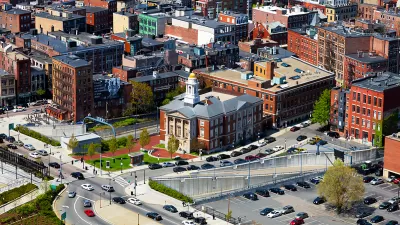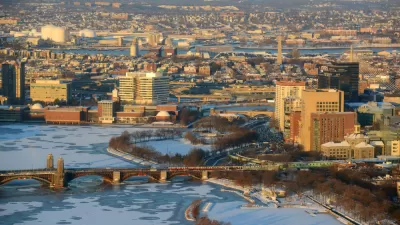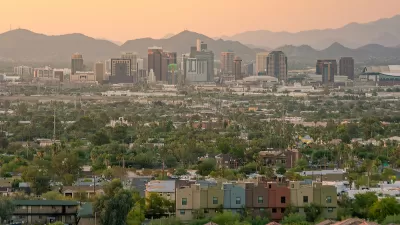Large buildings with uses of all kinds will be subject to Boston's new "Maximum Parking Ratios."

Christian MilNeil reports: "The City of Boston recently announced new planning guidelines for large developments that will limit the amount of parking that developers will be allowed to build, with stricter limits applying in the city’s most transit-accessible neighborhoods."
The city laid out the new "Maximum Parking Ratios" in a new map, with tables and a color code that matches ratios to corresponding land uses.
"In downtown, the South End, and Back Bay, where transit options are most abundant and city streets are the most congested, the new rules would limit developers to building, at most, 0.35 parking spaces per rental apartment, and 0.3 parking spaces per 1,000 square feet of office or lab space," explains MilNeil to provide some specificity on the parking ratios.
"The new maximum parking ratios only to large projects that are over 50,000 square feet in size, which is roughly the size of a 50-unit apartment building."
Differentiating these Maximum Parking Ratios from zoning reforms that remove minimum parking requirements—a more common practice in U.S. cities with every passing year—MilNeil explains that political support is building for more comprehensive parking reforms.
These Maximum Parking Ratios are a critical first step in the larger reform effort.
The Maximum Parking Ratios do accomplish reforms for minimum parking requirements, however. "Throughout the entire city, the new guidelines also specify that zero parking would be allowed for new developments, in conjunction with required 'transportation demand management' plans to provide more car-free transportation options," adds MilNeil.
FULL STORY: Boston Establishes Maximum Parking Rules for Large Developments

Planetizen Federal Action Tracker
A weekly monitor of how Trump’s orders and actions are impacting planners and planning in America.

Congressman Proposes Bill to Rename DC Metro “Trump Train”
The Make Autorail Great Again Act would withhold federal funding to the system until the Washington Metropolitan Area Transit Authority (WMATA), rebrands as the Washington Metropolitan Authority for Greater Access (WMAGA).

DARTSpace Platform Streamlines Dallas TOD Application Process
The Dallas transit agency hopes a shorter permitting timeline will boost transit-oriented development around rail stations.

Renters Now Outnumber Homeowners in Over 200 US Suburbs
High housing costs in city centers and the new-found flexibility offered by remote work are pushing more renters to suburban areas.

The Tiny, Adorable $7,000 Car Turning Japan Onto EVs
The single seat Mibot charges from a regular plug as quickly as an iPad, and is about half the price of an average EV.

Supreme Court Ruling in Pipeline Case Guts Federal Environmental Law
The decision limits the scope of a federal law that mandates extensive environmental impact reviews of energy, infrastructure, and transportation projects.
Urban Design for Planners 1: Software Tools
This six-course series explores essential urban design concepts using open source software and equips planners with the tools they need to participate fully in the urban design process.
Planning for Universal Design
Learn the tools for implementing Universal Design in planning regulations.
Municipality of Princeton
Roanoke Valley-Alleghany Regional Commission
City of Mt Shasta
City of Camden Redevelopment Agency
City of Astoria
Transportation Research & Education Center (TREC) at Portland State University
US High Speed Rail Association
City of Camden Redevelopment Agency
Municipality of Princeton (NJ)





























